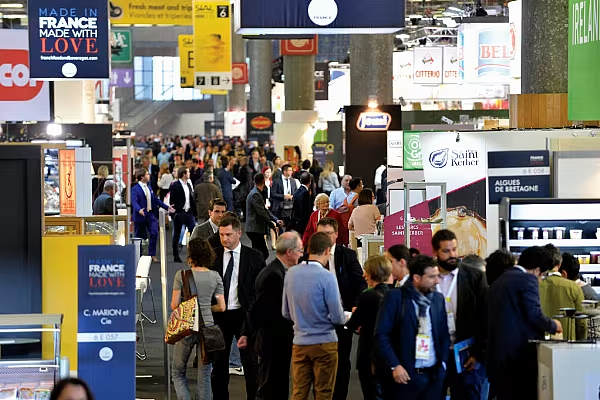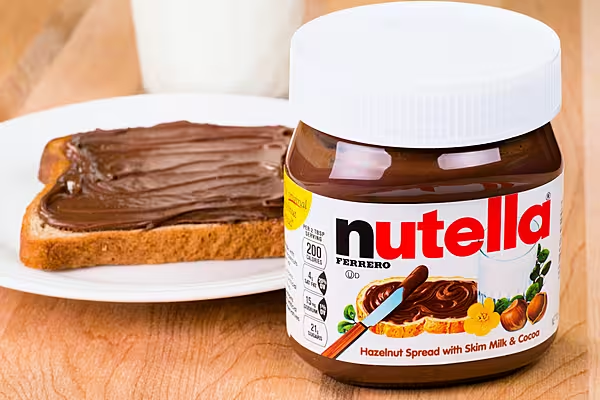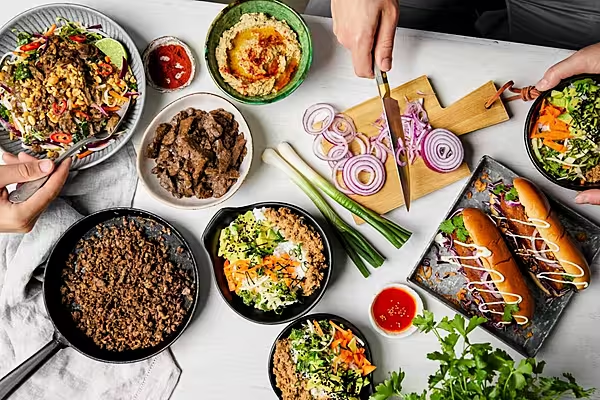Both food retail and foodservice have seen extensive changes to their operating structures in recent years, meaning that it is important for SIAL to help delegates understand how to meet these challenges. ESM speaks to Nicolas Trentesaux, SIAL network director. This article first appeared in ESM Issue 5 2018.
Food retail is changing, quicker than ever before. A consumer revolution is changing the nature of retail structures, redefining market positioning, ranges, partnerships and how organisations operate. As well as showcasing the latest product innovations from across the global marketplace, SIAL Paris also plays an important role in establishing market trends.
Ahead of the event, ESM catches up with Nicolas Trentesaux, SIAL network director (pictured above), about some of the key findings that attendees will be able to take away from this year’s event.
ESM: How do you define the concept of ‘food retail’ today?
Nicolas Trentesaux: Food retail today is nothing like it was yesterday. From product offer to store concept, through to payment or delivery mode, the metamorphosis has been nothing short of radical.
This phenomenon shows no signs of slowing down, driven, as it is, by the appetite of consumers, as well as the ingenuity of manufacturers, always at the cutting edge of innovation. In fact, food retail – which, unlike other sectors, has experienced relatively little upheaval over the past 30 years – is currently going through a period of accelerated change.
Proximity, service and hybridisation are undoubtedly the buzzwords of this revolution. Illustrative of this are the world rankings of the biggest food retailers. Every year, the cards are reshuffled, with the latest major change being the rise to prominence of Amazon.
You speak of an ‘ongoing’ revolution. Is this a global phenomenon?
Absolutely! You will see this for yourself in October, at SIAL Paris 2018, the showcase of global food retail.
There is a strong link between the first-hand accounts of our experts and the feedback from our exhibitors and visitors throughout the SIAL network, along with the information that has been gathered from studies that we have conducted with our partners.
While different countries and regions are at different stages of progress, the entire planet is seeing this ongoing revolution. The globalisation of food retail means that the sector is growing stronger, as tastes and flavours travel and establish themselves.
Does the digitalisation of trade not carry the risk, ultimately, of homogenising taste and loosening the link between the consumer and food?
On the contrary. I would say that digitalisation is more like a means of bringing people closer to food. In our industry, the major phenomenon that we are witnessing today is, in fact, the ‘re-humanisation’ of trade.
For example, store chains all over the world are reducing the size of the sales floor. Small supermarkets, click-and-collects and market-style operations are riding high, while, at the same time, hypermarkets are being trimmed down by several hundreds, or even thousands, of square metres.
Is proximity, therefore, becoming the essential value in food retail?
I would prefer to focus on the notion of pleasure. Consumers are getting closer to the product. They are encountering more and more opportunities to taste food in store. Sharing and pleasure are back in vogue.
It is a trend that is loudly echoed in the emergence of food halls, such as Eataly or, indeed, SIAL Paris, which can claim to be the biggest food-hall events in the world in 2018.
What is the state of play with foodservice today?
Whenever I’m asked this question, the picture of a constantly rising champagne bubble always comes to mind. The foodservice market is effervescent, and what is quite remarkable is that the same trend can be observed all around the world.
Some figures to illustrate this: in the United States, on the back of 2.1% growth in 2016, foodservice, again, had a very good year in 2017, up 1.7%. In China, foodservice revenue has now passed the $600 billion mark, following a 5.4% rise over one year. In the United Arab Emirates, the sector was, once again, booming in 2017, with 4.5% growth.
Finally, in a country that we know well – France – foodservice showed good progress, up 1.8% last year. It is a trend that seems to be continuing in 2018, not only in France and Europe, but also for the other regions of the world.
So it’s shaping up well economically, but what else is new in foodservice today?
You are right not to focus solely on the macroeconomic data. Foodservice is undergoing a revolution, and practically nobody is yet able to measure the full extent of the phenomenon.
If we cast our eyes back over the history of SIAL – 30 years, 20 years, or even ten years ago – there was nothing like the same profusion of new concepts, such vigorous and creative reinvention of recipes, such rapid dissemination of culinary traditions, with strong local roots. This level of change knows no frontiers.
It’s very like the concept of ‘glocalisation’, then?
Exactly! In New York, Montreal, London, Paris, Berlin, Shanghai, Abu Dhabi, Jakarta and many other locations, hybrid spaces – restaurant-cum-cafes, or cafe-cum-supermarkets – are springing up everywhere. Food halls are filled with kiosks offering fare from all over the world, enabling visitors to get a taste, on the spot, of all kinds of gourmet, fresh and inventive cuisine.
Fast food is moving into the realms of fine food, and digitisation is now moving the restaurant into the home. What is happening represents a phenomenal acceleration in the history of food and foodservice. It is this very revolution that interests us, and which we will be deciphering and sharing at SIAL Paris.
What role does foodservice now play, therefore, in the wider food landscape?
To determine this, I suggest going back to basics: why do we go to restaurants? From one individual to the next, there are many motivations. It may be a question of saving time, the desire for service, for treating yourself, for meeting up with friends and family in convivial surroundings, yet one motivation keeps on cropping up: to discover new flavours and trends, which you subsequently want to try to reproduce at home.
The foodservice industry is, therefore, a food innovation laboratory of sorts, where the cuisine of tomorrow is invented and where manufacturers, artisans and consumers come to glean new ideas.
In the space of just a few years, foodservice professionals have totally revamped their trade and the very concept of foodservice itself.
Is SIAL not also a foodservice ideas lab?
We are, indeed, a laboratory for new topics and trends. Eclectic and unprejudiced, from gluten-free to vegan, from locavore to high-tech, no current or future trend escapes the SIAL radar. Chefs know this. They enjoy strolling through the aisles to feed their inspiration and discover new flavours from every corner of the world.
At the 2018 show, we shall be unveiling, for the first time, alongside the international study conducted by SIAL/Kantar TNS/XTC World Innovation, the results of a worldwide study of foodservice conducted in partnership with Gira Conseil. These results will testify to this extraordinary revolution that is under way, and delineate a horizon full of innovations for foodservice, encompassing robotics, data, personalisation and products for enjoyment.
How do you capitalise on this? What importance do you place on experience and exchange?
Experience only serves a purpose if it is shared. Thanks to flagship events dedicated to foodservice, we offer all visitors and exhibitors the possibility of exchanging ideas with many established and up-and-coming chefs – both stars and lesser-known personalities – who will be in attendance at SIAL.
This, in turn, enables them to find new sources of inspiration and be a part of the great adventure which has been described as Cuisine 3.0 – a trend that is at once inventive, responsible and connected.
Examples include La Cuisine, first of all, which will feature daily demonstrations from international chefs, in partnership with Rungis and the École Ferrandi. Another opportunity is the foodservice and innovative products themed trail, devised by Yannick Alléno, the multi-Michelin-starred chef, who is also the patron of SIAL Paris 2018.
So SIAL Paris is more than just the biggest food retail event taking place this year?
By no means. It is also the biggest restaurant in the world, and a gourmet restaurant at that, with no borders, with multiple traditions and recipes, where professionals can find inspiration from around the world in just one place.
At the same time, words need to be backed up by actions, and in 2018, buoyed by our previous success, we are once again running SIAL OFF, comprising a list of 50 restaurants and specialist food outlets, which offer a unique experience of the gastronomic scene in Paris.
SIAL is very much a global-focused event. Is there a particular country, or region, that you think is driving retail forward at the moment?
Every country is a model in itself, since, in the field of food retail, every region continues to preserve its traditions, its recipes, and its successful formulas. You don’t do your shopping in the same way someone in Canada, Indonesia, France or India does.
That said, today, China is leading the way on the world markets, stealing the thunder from California, which still remains a cradle of innovation in the field of food retail. A particular strong point of the Chinese model is the terrific capacity to develop communicability and services, and make commitments to consumers.
Can you give us an example to illustrate this Chinese dynamism?
Most retail chains have started to use mobile apps to accentuate their offering. You can use it to do your shopping and have it delivered to your home or your workplace in less than half an hour.
You can use it to get a chef to prepare one or more meals with selected ingredients, or you can select products on site, or sample them in a foodservice zone set up within the supermarket. This really goes down a storm because it underlines commitment to the consumer, simply and transparently.
How will SIAL 2018 take the ‘food revolution’ phenomenon into account?
All the short-, medium- and long-term trends that you will discover one day on the shelves of global stores start out at SIAL. Why? Because we are an ideas laboratory, first and foremost, for retail and foodservice professionals. In order to stay one step ahead of this ongoing revolution, which affects every area of retail, a visit to the biggest food lab around cannot be beaten.
To take the pulse of a sector in the stages of revolution and discover the innovations that will transform food retail, SIAL Paris is the place to be, from 21 to 25 October 2018 at Paris-Nord Villepinte.
© 2018 European Supermarket Magazine – your source for the latest retail news. Article by Stephen Wynne-Jones. Click subscribe to sign up to ESM: European Supermarket Magazine.














